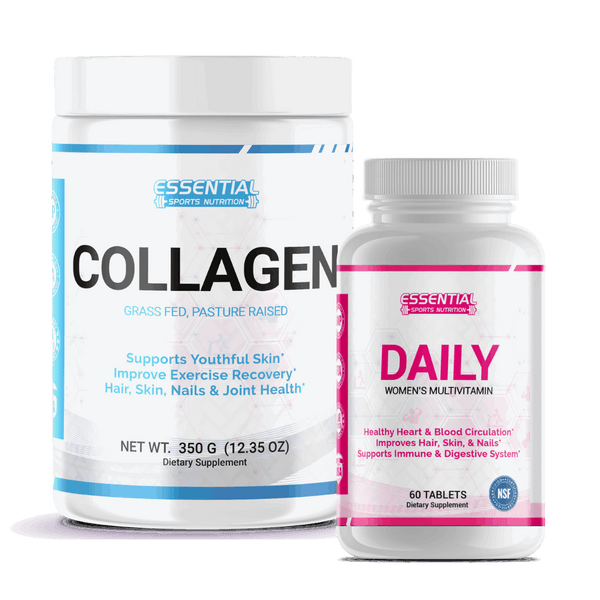Aromatherapy Massage vs Swedish Massage: Key Differences Explained
When choosing between aromatherapy and Swedish massage, consider your personal wellness goals. Aromatherapy combines therapeutic essential oils with massage techniques, focusing on emotional balance and relaxation through scent. It offers a personalized experience tailored to your preferences. On the other hand, Swedish massage emphasizes physical tension relief using long, flowing strokes, making it great for improving circulation and relaxation. While aromatherapy engages your senses, Swedish focuses on muscle relief. Ultimately, your choice should reflect whether you seek calming aromas or soothing touch. Discovering the nuances of each style can help you find the perfect fit for your needs.

Key Takeaways
- Aromatherapy massage combines essential oils with traditional techniques for emotional balance, while Swedish massage focuses on muscle relaxation and improved circulation.
- Aromatherapy emphasizes olfactory stimulation and customizable scent selection, whereas Swedish massage follows standardized physical techniques.
- Aromatherapy uses slower-paced techniques for oil absorption, while Swedish employs long, flowing strokes with adjustable pressure levels.
- Essential oils are integral to aromatherapy, contrasting with typically unscented oils used in Swedish massage.
- Choose aromatherapy for emotional well-being and relaxation, or Swedish for effective physical relief from tension.
Overview of Aromatherapy Oil Massage
Aromatherapy oil massage is a unique blend of therapeutic essential oils and traditional massage techniques designed to elevate your relaxation experience. During your session, a trained therapist will start with an initial consultation to discuss your health needs. This approach allows them to select essential oils tailored to your preferences, enhancing the benefits of the massage.
Essential oils like lavender and peppermint are diluted in a carrier oil or lotion, creating a soothing medium for application. As the therapist employs various massage techniques—kneading, rolling, and tapping—you'll feel muscle tension melt away while the calming scents promote emotional well-being. The aromatic properties of the oils, combined with the physical touch, create a holistic experience that not only addresses physical discomfort but also fosters mental clarity.
This type of massage is particularly effective for relieving stress, anxiety, and fatigue. By integrating aromatherapy with traditional methods, you're engaging in a practice that nurtures both body and mind. So, if you're seeking a pathway to deeper relaxation and rejuvenation, consider the enriching experience of an aromatherapy oil massage.
Overview of Swedish Massage

When you're looking for a massage that combines relaxation with therapeutic benefits, Swedish massage stands out as a popular choice. This renowned technique is characterized by its long, flowing strokes and includes methods like effleurage, petrissage, friction, percussion, and vibration. Each of these techniques aims to provide stress relief and enhance your overall well-being.
One of the main goals of Swedish massage is to relieve muscle tension while improving circulation. By gently manipulating the soft tissues, the therapist helps to increase blood flow, allowing your body to function effectively. This massage is suitable for everyone—whether you're a newcomer or someone with more experience.
What makes Swedish massage truly special is its personalized experience. Your therapist will adjust the pressure levels according to your comfort and preferences, ensuring that you receive the most effective treatment tailored just for you. The focus on continuous movement and gentle manipulation helps to reduce anxiety and enhance relaxation, leaving you feeling rejuvenated and balanced. If you're seeking a holistic approach to wellness, Swedish massage is an excellent choice to explore.
Key Differences Between Massages
Choosing between aromatherapy and Swedish massage can be a bit overwhelming, especially since both offer unique benefits. Aromatherapy integrates essential oils tailored to your personal preferences, enhancing the relaxation technique through olfactory stimulation. The scents aim to provide therapeutic benefits, promoting emotional balance alongside physical relaxation.
In contrast, Swedish massage focuses primarily on physical techniques, utilizing long, flowing strokes like effleurage and petrissage to target muscle relaxation and relieve tension. While both massages encourage overall relaxation, the experience differs considerably. Aromatherapy engages your senses, allowing you to immerse yourself in the scents that resonate with you, while Swedish massage emphasizes the physical manipulation of muscles for effective stress relief.
Another key difference lies in personalization. Aromatherapy is highly customizable, as the selection of essential oils can be adjusted to fit your specific needs. On the other hand, Swedish massage generally follows a more standardized approach. Ultimately, your choice may depend on whether you're seeking the calming effects of scents or the soothing touch of skilled hands. Understanding these distinctions can help you make the best choice for your wellness journey.
What to Expect During Each Massage

Expect a unique experience with each massage type, as both aromatherapy and Swedish massage offer distinct approaches to relaxation. Here's what you can anticipate during your session:
- Aromatherapy: You'll start with an initial consultation to select essential oils that cater to your specific needs, enhancing the therapeutic benefits.
- Pressure Level: In Swedish Massage, the therapist will use long, flowing strokes and adjust the pressure level based on your comfort, ensuring a soothing experience.
- Techniques Used: Aromatherapy focuses on slower-paced techniques that enhance the absorption of oils, while Swedish Massage employs more vigorous movements like kneading and circular motions.
- Oils and Scents: Expect essential oils mixed with carrier oils during Aromatherapy, contrasting with the unscented oils typically used in Swedish Massage.
- Post-Massage Relaxation: Both sessions will conclude with time for relaxation; however, Aromatherapy emphasizes the calming effects of scents, while Swedish Massage often includes hydration recommendations.
Regardless of your choice, both massage types promise unique benefits, leaving you feeling rejuvenated and tranquil.
Choosing the Right Massage for You
Deciding on the right massage can greatly enhance your overall experience and satisfaction. When choosing between aromatherapy and Swedish massage, think about your primary goal. If you're seeking emotional balance and relaxation, aromatherapy is the way to go. It utilizes essential oils in a personalized selection tailored to your needs, offering scent-based benefits that can combat stress and fatigue.
On the other hand, if physical tension relief is your priority, Swedish massage provides a variety of massage techniques focused on muscle relaxation. It's often recommended for first-time clients due to its classic approach and wide range of pressure options, making it suitable for both gentle and deeper tissue relief.
Before booking your session, consider any allergies to scents, as that could influence your decision. If you prefer a more traditional experience, Swedish massage may be more comfortable for you. Ultimately, whether you choose aromatherapy for a holistic experience or Swedish massage for effective physical relief, knowing your goals will help you enjoy the benefits each option offers. Remember, the right choice can lead to a more fulfilling massage experience.
Conclusion

Whether you're drawn to the soothing scents of aromatherapy or the deep relaxation of Swedish massage, both offer unique benefits for your well-being. Aromatherapy enhances your experience with using essential oils, while Swedish massage focuses on muscle tension relief. Consider your personal needs and preferences when choosing. Ultimately, both can contribute to a healthier, more balanced you, so don't hesitate to explore what resonates most. Your journey to relaxation and rejuvenation starts with the right massage for you!
Difference Between Aromatherapy and Swedish Massage FAQs
Q. Which Is Better Swedish or Aromatherapy Massage?
A. Choosing between the two depends on what you need. If you're seeking emotional balance and stress relief, aromatherapy might suit you. For muscle tension and relaxation, Swedish could be your best bet. It's all about your preference!
Q. What Is the Most Pleasurable Type of Massage?
A. The most pleasurable type of massage really depends on your personal preferences. Consider what feels best for you—whether it's soothing techniques to relieve tension or a sensory experience that enhances emotional well-being. You'll know what you enjoy!
Q. Which Is Better Aromatherapy or Deep Tissue Massage?
A. When choosing between aromatherapy and deep tissue massage, consider your needs. If you're looking for relaxation and emotional balance, aromatherapy's gentle approach might suit you. For targeted pain relief, deep tissue's firm pressure could be better.
Q. What Is the Aromatherapy Massage?
A. Aromatherapy massage combines essential oils and massage techniques for relaxation and emotional well-being. It's slower-paced, allowing oils to absorb deeply, enhancing your experience while targeting tension and promoting a balanced mood. You'll feel rejuvenated!
Q: What is the difference between aromatherapy and Swedish massage?
A: The primary difference between aromatherapy and Swedish massage lies in the use of essential oils. Aromatherapy massage incorporates the use of essential oils to enhance relaxation and promote healing, while Swedish massage focuses on rhythmic and soothing techniques to relieve stress and anxiety.
Q: Can a massage therapist provide both aromatherapy and Swedish massage?
A: Yes, many massage therapists are trained in different types of massage therapy, including both aromatherapy and Swedish massage. You can request either or a combination during your session.
Q: What types of essential oils are commonly used in aromatherapy massage?
A: Common essential oils used in aromatherapy massage include lavender for relaxation, peppermint for invigorating effects, and eucalyptus for respiratory benefits. These oils are chosen based on individual needs and preferences.
Q: Is Swedish massage considered a full-body massage?
A: Yes, Swedish massage is typically a full-body massage that involves various techniques to promote relaxation and relieve tension throughout the body.
Q: How does aromatherapy massage promote relaxation?
A: Aromatherapy massage promotes relaxation through the use of essential oils that can help reduce stress and anxiety. The combination of soothing massage techniques and the therapeutic properties of the oils creates a calming experience.
Q: Are there any other types of massage therapy that include essential oils?
A: Yes, besides aromatherapy massage, other types of massage therapy such as hot stone massage and sports massage can also incorporate the use of essential oils to enhance the experience and therapeutic effects.
Q: What techniques are typically used in Swedish massage?
A: Swedish massage techniques include deep circular motions, tapping, kneading, and rhythmic strokes, all aimed at promoting relaxation and relieving muscle tension.
Q: Is aromatherapy massage suitable for someone new to massage?
A: Yes, aromatherapy massage can be a great option for those new to massage as it is generally a relaxing and soothing form of massage therapy, allowing individuals to ease into the experience comfortably.
Q: Can aromatherapy and Swedish massage help relieve pain?
A: Both aromatherapy and Swedish massage can help relieve pain by relaxing the muscles and reducing tension. Aromatherapy may enhance this effect through the therapeutic properties of essential oils.
Q: What is the best massage for relaxation?
A: The best massage for relaxation often depends on personal preference, but many people find that Swedish massage techniques and aromatherapy massage are particularly effective for promoting relaxation and reducing stress.























